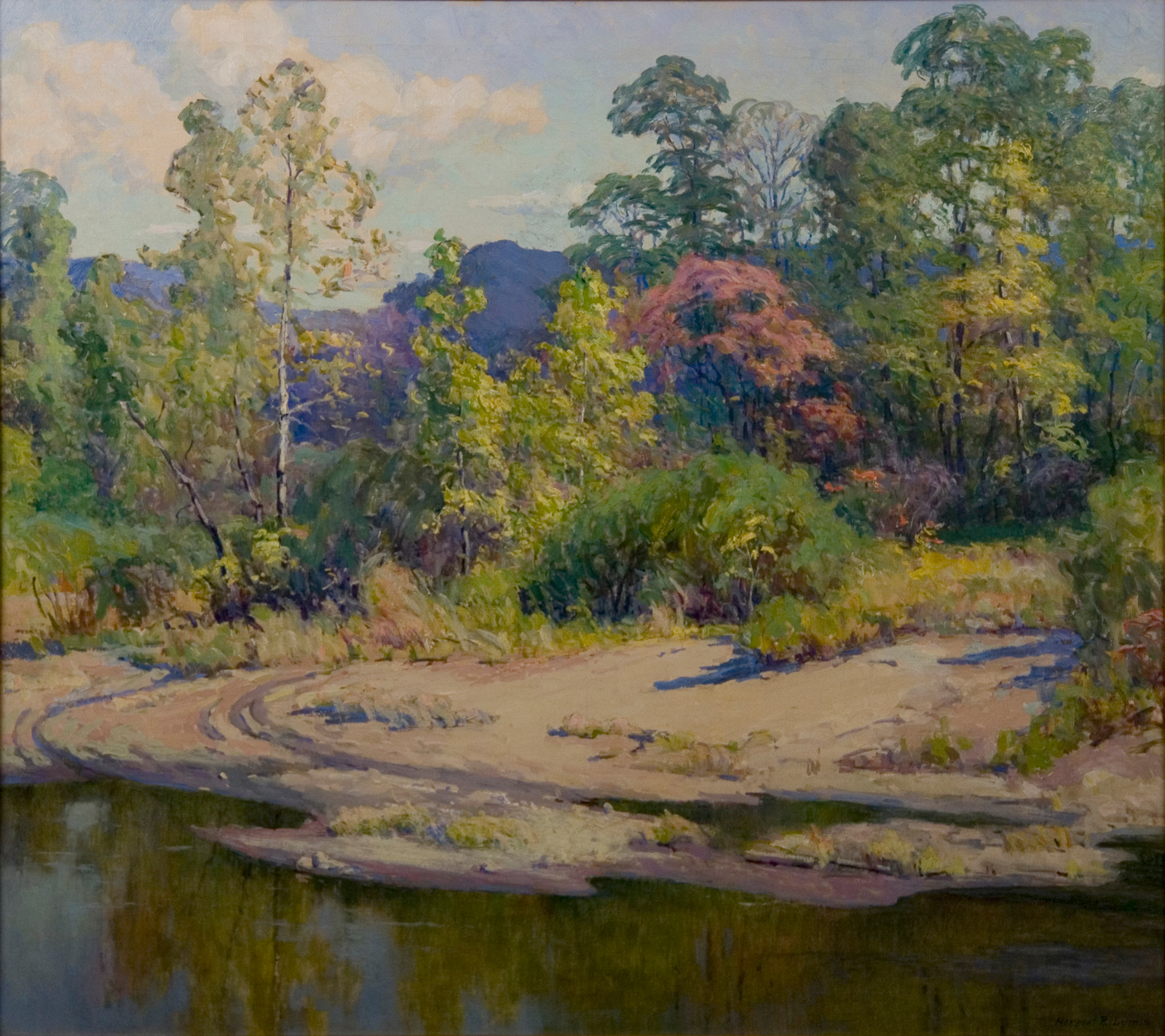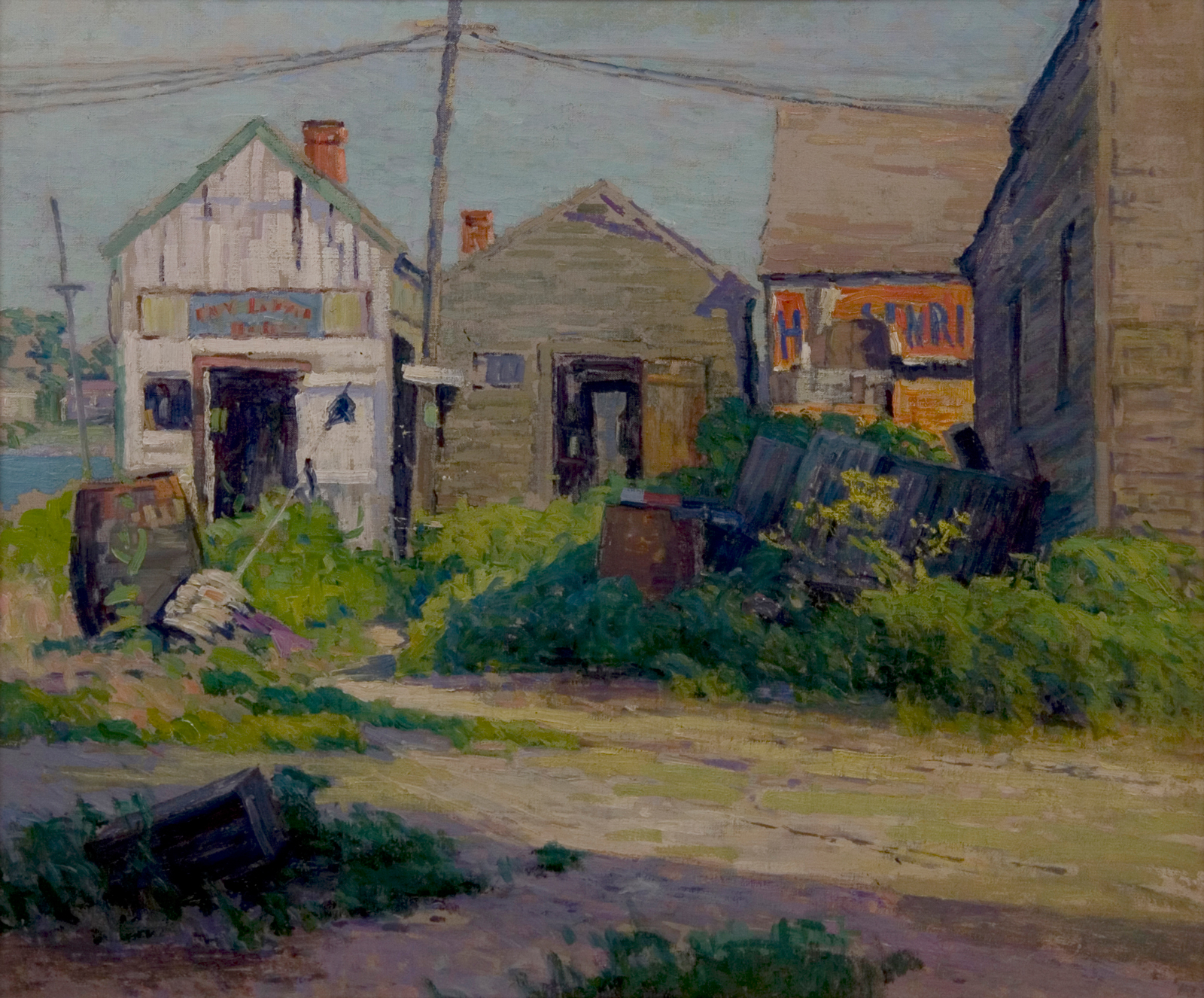Harriet Randall Lumis
Harriet Randall Lumis (1870-1953) was a landscape painter, a mainstay of the early 20th century New England art scene whose style evolved from a Whistler-inflected Tonalism to high-keyed Impressionism. Lumis was also one of the founding members of the Academic Artists Association, an organization that promoted realism in art over abstraction.
In contrast to many other female artists at the time, Lumis’s artistic career actually blossomed only after she married architect Fred Lumis in 1893. Born in the small farming community of Salem, Connecticut, Lumis received an early education in art, music, and dance but did not start seriously studying art until she turned 23 when she took an evening drawing class in Springfield, Massachusetts, alongside her husband. Willis Seaver Adams was one of Lumis’s early teachers, a Tonalist who specialized in serene, twilit landscapes; his influence was apparent in the soft palettes and even lighting of her early work. Leonard Ochtman was another early teacher and Tonalist who also had an interest in Impressionism; studying under him at the Cos Cob art colony, Lumis’s pieces took on a heavier impasto with bright blocks of color, looser brushwork, and a more pointed, slice-of-life quality.
Working en plein air and out of a studio in her home, Lumis started submitting her work to shows in the early 1910s. In 1918, she helped to establish the Springfield Art League, promoting the art of local artists; sometime around 1920, she was elected to the National Association of Women Painters and Sculptors; by 1924, the National Academy of Design had selected one of her works for display. Widowed in 1937 and left with little income, Lumis spent the remainder of her life teaching art.

